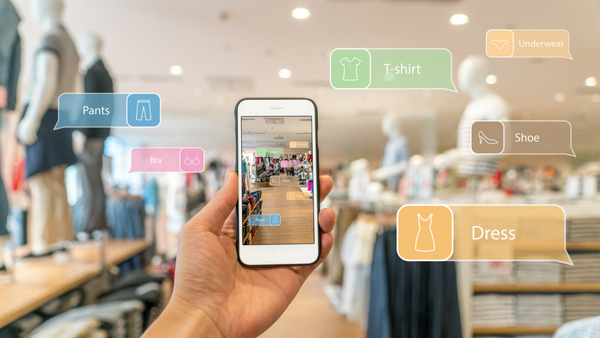Author
“It is clear that in the long-term view there are potentially very few businesses that won’t be impacted by AR technology.“
Vice President of IDC
What are augmented reality (AR) and virtual reality (VR)?
VR, and the little known AR, are technologies able to alter or create an entirely new world for the user, using computer-generated images.
The two technologies, while similar, operate in different ways. AR superimposes a computer-generated image on top of a user’s view of their own real world, while VR creates a fictional world through a wholly computer-generated environment that may be interacted with in a physical way by the user while they are wearing special equipment.
For many, these ideas seem apt to science-fiction, but they are quickly becoming a popular reality. Both of these innovative technologies are mostly in their start-up phase, with companies still learning of and trialing their potential uses. Although, according to TechProResearch, 61% of companies have not yet adopted AR or VR, a survey by DigitalBridge found that 74% of consumers now expect retailers to offer some type of AR experience, and that figure is on the rise.
How are AR and VR technologies used?
VR is already well-known for its gaming applications; immersive game-play through a headset which puts the user directly in the game’s digital world, has attracted wide-spread attention. By contrast, AR is perhaps most commonly associated with camera filters or apps on smartphones (for example, Snapchat or Pokémon Go).
Recently, due to a rise in customer demand for personalisation and convenience, retailers have been experimenting with the technology further; in-store, via apps and within their products. Alongside artificial intelligence (AI), AR and VR look set to transform the retail sector.
AR in particular is being utilised to enhance customers’ in-store experiences. Statistics from Retail Perceptions suggest that 40% of customers think they would spend more on a product if AR was involved in the purchase.
Clothing retailers, including Gap, American Apparel and Topshop, have created AR dressing rooms allowing customers to virtually try on clothes. Implementing AR in this way can offer many benefits to retailers. Virtual dressing rooms save valuable space in-store and keep costs low, primarily by preventing wastage from damaged, tried-on clothes, and by reducing staff costs.
As well as AR, VR is being employed to enrich the in-store experience. North Face now uses VR in its stores to virtually transport customers to the Yosemite National Park while they shop.
Another aspect of the retail sector likely to experience a boost from the technology is ecommerce. AR allows customers to try products from the comfort of their own homes. Swedish furniture store, Ikea, has launched the ‘Ikea Place’ app which allows you to virtually place Ikea products to scale in your home through your smartphone camera. Other furniture retailers, such as Anthropologie, have since followed suit.
AkzoNobel, the Dutch company behind the brand Dulux, has created the Visualiser app which allows customers to try paint colours on their walls at home virtually through a smartphone or tablet. So far, this app has been downloaded 18 million times globally.
A large number of apps now allow customers to virtually try on make-up. Charlotte Tilbury, Sephora and L’Oréal have all offered the technology, with L’Oréal’s MakeupGenius app being downloaded more than a million times.
Chinese ecommerce giant, Alibaba, was the first to create an entire virtual reality mall, providing customers with the benefits of physically shopping without the need for physical stores.
What potential do AR and VR have?
Goldman Sachs estimates that by 2025, virtual reality will have an annual worth of $1.6 billion and will be used by 32 million people worldwide.
With 2.4 billion smartphone users globally, AR and VR have the potential to be utilised on a large scale. Increasingly, retailers are facing consumer pressure to provide a tailored and dynamic shopping experience and are being forced to adapt to keep up with the technology.
The technologies are often deployed in a customer-facing capacity, but there is an opportunity to turn the technology into a retailers’ tool, particularly for data and marketing analysis. Virtual representations of potential new stores can allow for the tracking of virtual shoppers’ movements which may help with planning store layout based on foot traffic and to evaluate effectiveness of displays – all before the store is built. Heat mapping can show the tracking of customers’ eye movements which can provide invaluable information on what is capturing their attention.
Limitations of AR and VR
The need for hardware to use VR could be a limiting factor for the technology. Customers may not be willing to purchase the headsets, which can be costly, and this could mean that VR is not easily scalable. Not everyone will have the ability to use it in their homes.
For retailers, implementing AR or VR into store or investing in the creation of an app can be expensive and time-consuming, but the necessity of keeping up with competition may outweigh this concern.
Additionally, while the potential advantages to some industries, such as fashion or beauty, may seem obvious, it is not as clear cut how the technologies would fit or benefit others, such as the food or grocery market.
Similarly to AI, the novelty factor of the technology may be playing a part in its initial success and the longevity remains to be tested.
For more information please contact Francesca Hubbard, Associate in the Retail team at francesca.hubbard@michelmores.com or on +44(0)1392 687569.

